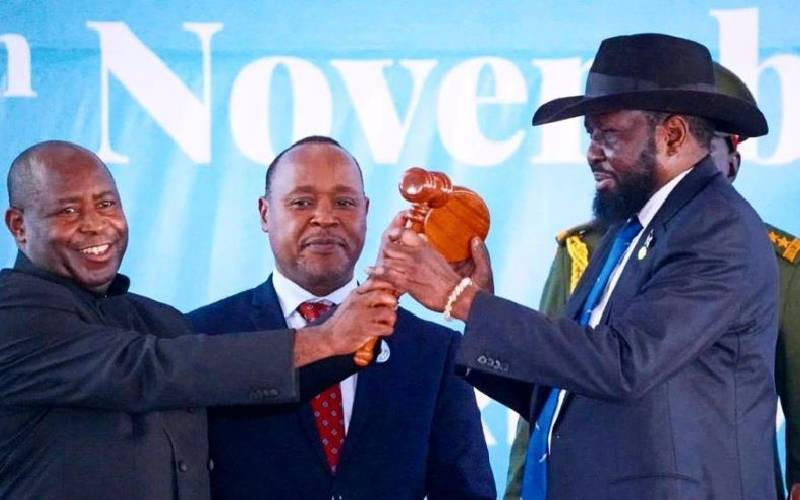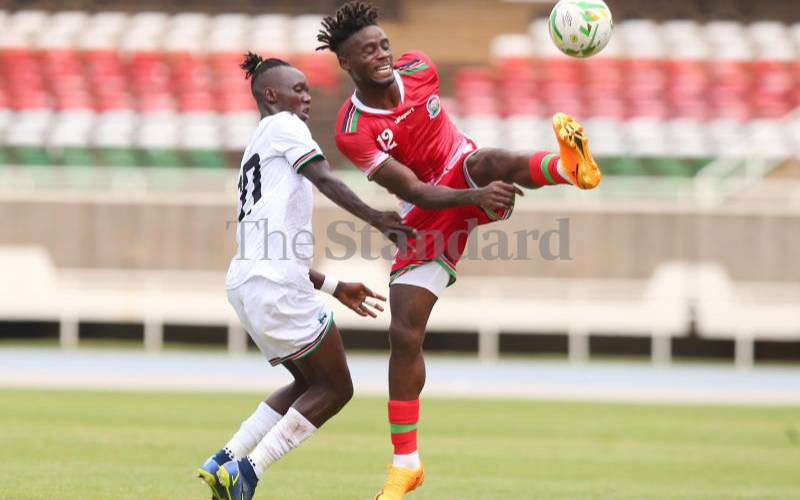By Lillian Aluanga
Three weeks short of this day in 2005, a cloud of grief blanketed South Sudan over reports that John Garang, a symbol of its liberation struggle, was dead.
That was only three weeks after he had been sworn-in as Vice- President in part of a deal to end Africa’s longest civil war, and move South Sudan closer to freedom. Today, South Sudan is under a different cloud; one impregnated with unbridled excitement and dreams expected of any population in the new independent state.
The journey to the South’s liberation has been arduous. But it is also one that would not escape mention of John Garang de Mabior, on whose mausoleum the declaration of Independence was read.
Garang, he of the ‘American-educated’ fame with a doctorate in Agricultural Economics from the Iowa State University, would abandon books for bush and join the struggle to liberate southerners in a civil war spanning decades. Mercifully the guns would fall silent with the signing of a Comprehensive Peace Agreement (CPA) in Kenya in 2005.
Part of that agreement stated that a referendum be held in January 2011. It was, and got an overwhelming vote in favour of secession.
But the CPA was not the only agreement that the warring groups were signatories to.
There was the 2002 Machakos Protocol advocating a ceasefire, followed by agreements on security arrangements, wealth and power sharing and resolution of conflicts in Abyei, Southern Kordofan, and Blue Nile states. Much remains to be done on their implementation.
The 1990s had seen a series of failed talks between Khartoum and the South in a nation that had endured a litany of coups since independence in 1956. But it was the eruption of a civil war in 1962 led by Major General Joseph Lagu of the Anya Nya One Movement that marked the start of a sustained push to separate the largely Christian and animist South from the predominantly Islamic north.
It was upon his return to Sudan in 1982, that Garang earned the rank of colonel, stationed at the Khartoum headquarters of the National Army. It was therefore in fulfillment of his duties, months later, the military officer took orders to snuff out a mutiny engineered by Battalion 105 of the First Division at Bor, south of Khartoum.
His assignment was clear: quell the mutiny and return to base. But once in the battlefield, Garang switched allegiance to the mutineers and set up a command base, which was rapidly swelled by defectors from at least six garrisons of the army.
Thus was born the Sudan People’s Liberation Army, whose sustained push for freedom would peak in the declaration of an emergency in the south by then President Jaafar Numeiri in 1984.
Says James Shimanyula in his book John Garang and the SPLA: "In three years, Garang had brought under his control a third of Sudan."
But Garang was clear about his intentions, dismissing claims that he only wanted to be a leader.
Garang’s lifetime
Stay informed. Subscribe to our newsletter
"No war of liberation as we are fighting, is fought in order for a particular person to become head of state or leader. This is completely a isrepresentation of the liberation process. Our aim is to create a new Sudan. This new Sudan may not be during our lifetime..."
That liberation process has reached its apex.
As predicted it has not been in Garang’s lifetime, but for youth like Abuk Luka, 20, and Unguec Ajongo, 20, who have grown up in Kenya, it bears much promise.
Luka and Ajongo, like many other southerners are optimistic about the future and talk of hopes to return home, join university, build careers and a nation that they, too, would proudly hand down to their children.
 The Standard Group Plc is a
multi-media organization with investments in media platforms spanning newspaper
print operations, television, radio broadcasting, digital and online services. The
Standard Group is recognized as a leading multi-media house in Kenya with a key
influence in matters of national and international interest.
The Standard Group Plc is a
multi-media organization with investments in media platforms spanning newspaper
print operations, television, radio broadcasting, digital and online services. The
Standard Group is recognized as a leading multi-media house in Kenya with a key
influence in matters of national and international interest.
 The Standard Group Plc is a
multi-media organization with investments in media platforms spanning newspaper
print operations, television, radio broadcasting, digital and online services. The
Standard Group is recognized as a leading multi-media house in Kenya with a key
influence in matters of national and international interest.
The Standard Group Plc is a
multi-media organization with investments in media platforms spanning newspaper
print operations, television, radio broadcasting, digital and online services. The
Standard Group is recognized as a leading multi-media house in Kenya with a key
influence in matters of national and international interest.








